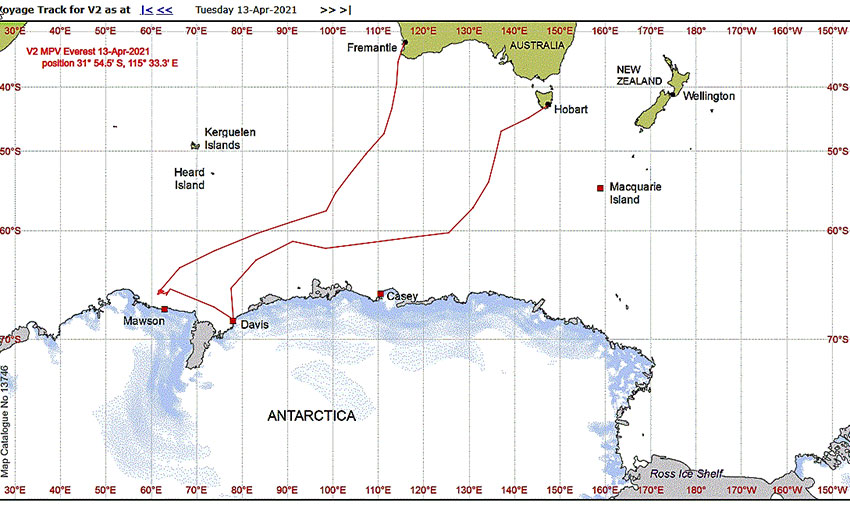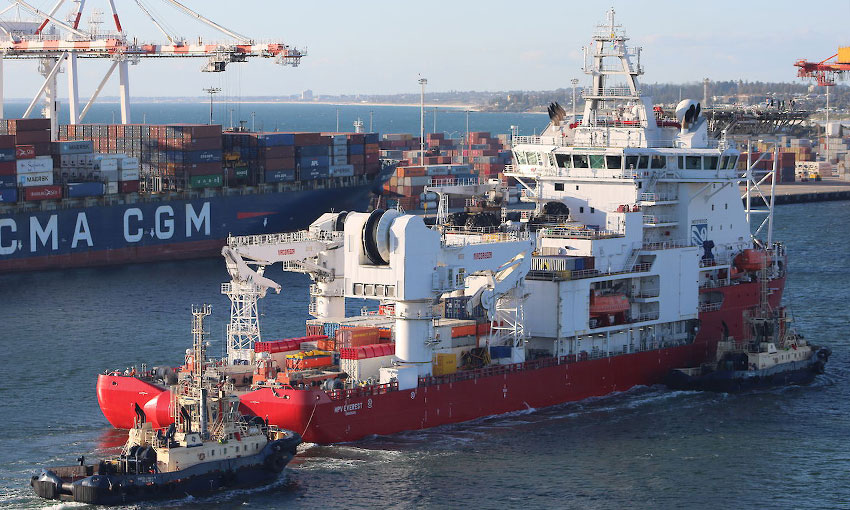MPV Everest has arrived at Fremantle more than a week after a fire broke out in its port-side engine room when the ship was about 1700 nautical miles south of Perth.
After the fire broke out on Monday 5 April, the vessel was diverted to Fremantle and a support vessel was dispatched from Dampier to escort MPV Everest on the last leg of its journey. No injuries were reported.
The ship, carrying 72 expeditioners and 37 crew, has completed a two-month, 12,400-kilometre voyage from Hobart to Davis and Mawson research stations in east Antarctica.
Before MPV Everest arrived, authorities in Western Australia issued an exemption from COVID-19 rules for the crew and expeditioners onboard. They do not have to quarantine on arrival, nor do they have to present for COVID-19 testing.
A spokesperson for the Australian Maritime Safety Authority told DCN AMSA would inspect the vessel.
“AMSA will be conducting an inspection to establish the ship’s seaworthiness,” the spokesperson said.
“AMSA’s priority is to ensure the ship continues to meet international standards and does not present a risk to the safety of the people on board or the marine environment.”
The Australian Transport Safety Bureau has also opened an investigation into the incident.
AAD general manager of operations Charlton Clark said the fire was contained and extinguished and the ship continued its return journey to Australia using the starboard engine room.
“The captain of MPV Everest decided to head for Fremantle as the nearest port, and the ship’s owners, Maritime Construction Services, deployed the nearest suitable large offshore tug, Go Spica, to accompany MPV Everest as a precaution,” Mr Clark said.
“The team on MPV Everest were pleased to have the vessel accompany them the last few hundred nautical miles into Fremantle and are even more thrilled to be reunited with their families back on dry land.”
The cause of the fire is being investigated by MCS and the Australian Transport Safety Bureau.

Australian Antarctic Division director Kim Ellis said the safe return of the voyage caps off an extraordinary season where expeditioners spent up to 535 days living in Antarctica.
“We salute the courage and resilience of the expeditioners and crew on this difficult voyage and thank everyone for working together to bring them home,” Mr Ellis said.
The voyage resupplied Davis research station and changed over expeditioners who had been there since 2019 after their season was extended due to transport issues caused by the COVID-19 pandemic.
“Despite the pandemic changing our usual transport logistics – different ships, no internal flights – we managed to keep Australian Antarctic stations going strong and free of coronavirus,” Mr Ellis said.
MPV Everest then travelled west to Mawson research station, where thick sea ice prevented ship access and forced resupply operations to be carried out by helicopters.
The Maritime Union of Australia said the incident raises some red flags about the management of the vessel.
MUA national secretary Jamie Newlyn said major incident such as this, particularly in such a remote area, poses a serious threat to the lives of everyone onboard, which is why proper contingency plans are important.
“The fact that it took over a week to get a support vessel to the MPV Everest – and it only reached them when they were less than a day from port – suggests the AAD lacked an effective contingency plan for major emergencies,” Mr Newlyn said.
“When an icebreaker runs into trouble in Antarctic waters, it’s not good enough for the rescue plan to be the chartering of a support vessel that needs to sail all the way from the Pilbara.”
Mr Newlyn said the arrival of Go Spica was too late to provide assistance should MPV Everest have required it.
“Sending the Go Spica was … an attempt by the AAD to look like they were providing emergency assistance when in fact this vessel only reached the MPV Everest as it was almost home, meaning it would not have been able to assist if a rescue was actually required,” he said.

